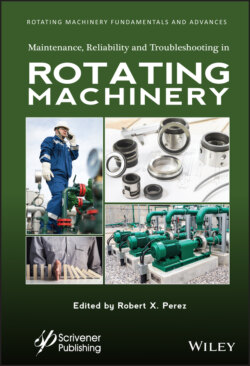Читать книгу Maintenance, Reliability and Troubleshooting in Rotating Machinery - Группа авторов - Страница 30
Conclusion
ОглавлениеIf we assume each valve failure leads to a two-day compressor outage, then the current consequence level is $50,000 per day times 2 days per outage, equals $100,000 per event, which we will consider a medium consequence level. Because there is a medium consequence level for a process outage and that compressors are failing at a rate of twice a year, we can conclude the current risk level is high (see cell with dashed oval in Table 1.4). It appears that the best way to reduce the risk level is to reduce the frequency of valve failures. Reducing the valve failure frequency from several times a year to once every 1 to 10 years moves the risk level from high to low.
Table 1.4 Risk matrix for machinery reliability assessment example.
Note: Installing an additional compressor to provide spare capacity is another way to reduce the overall risk level. However, a fifth compressor does not appear to be the most cost-effective solution to the current reliability problems. I will leave to the reader to analyze the pros and cons of installing a fifth compressor versus improving the reliability of the individual compressors.
In this example, the major recommendation is to review the present compressor valve designs to better understand why they are unreliable. First, the site needs to identify the root cause of the valve failures. Perhaps the failures are due to materials of construction, some type of gas contamination, or even the basic valve design. Every effort must be made to improve the service lives of these valves. Improving the reliability of these valves should be top priority for the site until their reliability of these four compressors are improved to acceptable levels.
